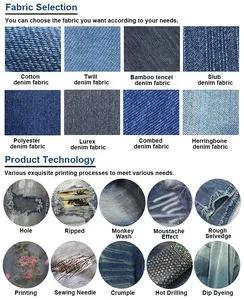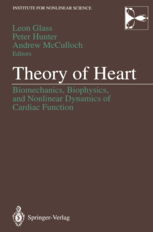Navigating the World of Textiles:A Guide to Certificates and Symbols
: A Comprehensive Approach to Textile Certification and Symbolism,Abstract: This guide delves into the intricate world of textile certification, offering an insightful overview of key certificates and symbols used in the industry. It explores how these certifications and symbols serve as a reliable measure of quality and authenticity, ensuring consumers can confidently make informed purchasing decisions. Through detailed explanations of each certificate and its significance, this guide empowers readers to navigate the complex landscape of textile products and distinguish between high-quality and low-quality alternatives. By understanding the intricacies of textile certification and symbology, readers will be better equipped to safeguard their investment and enjoy the exceptional craftsmanship found within the textile industry.
In the world of textiles, certificates and symbols are not just indicators but also a testament to the quality and authenticity of your fabric. They serve as the backbone of trust in the industry, helping consumers make informed decisions when purchasing products made from these materials. In this guide, we will delve into the essentials of textile certifications and how to navigate the landscape with confidence.
At the heart of any textile product is the thread of its origin story. This story is often traced back to the production process, which includes factors such as the materials used, the machinery employed, and the environmental impact of the manufacturing process. One way to ensure that your product aligns with high standards of quality and sustainability is to obtain certification.

One common certification for textiles is the Global Organic Textile Standard (GOTS). It ensures that organic cotton is grown and processed in ways that do not harm the environment, including soil and water conservation practices. The GOTS certification has become increasingly popular among consumers seeking out sustainable options in their clothing choices.
Another widely recognized label for textiles is Fairtrade Certified. This certification ensures that the workers involved in the production of textiles receive fair wages and working conditions, adhering to internationally agreed standards. Fairtrade products offer an ethical alternative to conventionally produced textiles, offering consumers the opportunity to support social and economic justice.
The International Organization for Standardization (ISO) provides a set of international standards for textile products. The ISO 9001 standard, for example, covers quality management systems for textile products, ensuring consistency across different manufacturers. By meeting these standards, companies can establish a strong reputation and gain recognition by customers who value quality control.
In addition to certifications, there are other labels that indicate the level of care and treatment that a fabric has received. For instance, the Oeko-Tex® Standard 100 guarantees that all the materials used in its products have been tested for harmful chemicals or microplastics. This label is particularly important for those looking for eco-friendly and chemical-free textiles.
When shopping for textile products, it's essential to be aware of these labels and understand how they impact the quality and safety of the items you purchase. Here's a simple table that summarizes some commonly found textile certifications and their meanings:
| Certification/Label | What it stands for | Importance |
|---|---|---|
| GOTS (Global Organic Textile Standard) | Organically grown and processed | Sustainability, Health |
| Fairtrade Certified | Fair labor practices and fair wages | Social and Economic Justice |
| ISO 9001 | Quality management system | Consistency in product quality |
| Oeko-Tex® Standard 100 | No harmful chemicals or microplastics | Environmental friendliness |
Now let’s take a case study on the importance of certifications. Imagine you’re at a market where you see a beautiful scarf labeled as "Fairtrade," "GOTS," and "Oeko-Tex 100." You might assume it's a great buy since it seems to meet so many criteria. However, upon closer inspection, you realize the scarf is actually made from synthetic materials and contains toxic dyes. This example highlights the importance of understanding the labels on your products; without them, you might be buying something that doesn't meet your expectations or could be unsafe for your health.
In conclusion, textile certifications and symbols are more than just labels; they provide consumers with a reliable tool to evaluate the quality, origin, and environmental impact of textile products. By choosing certified goods, you are supporting sustainable practices, protecting workers' rights, and reducing the carbon footprint associated with textile production. So, when making a purchase, don’t be afraid to ask questions or check the labels to ensure you’re making a wise decision. After all, every purchase counts towards creating a better, more sustainable future for our planet.
纺织品证书标志概述
纺织品证书标志是衡量纺织品质量、信誉和标准的重要标识,它不仅代表了生产商或供应商对纺织品质量的承诺和保证,也是消费者选择纺织品的重要参考依据,在纺织品行业中,证书标志通常由一系列符号、图案和文字组成,用以明确标识纺织品的质量等级、认证机构等信息。

纺织品证书标志的种类与特点
种类
纺织品证书标志的种类繁多,根据不同的标准和用途,可以分为多种类型,根据认证机构的不同,证书标志可以分为ISO认证标志、国家质量监督检验检疫标志等;根据纺织品的质量等级和标准,证书标志还可以分为AAA级认证标志、环保认证标志等。
特点
(1)权威性:证书标志通常由权威机构颁发,具有较高的权威性和可信度。
(2)明确性:证书标志清晰、明确地表达了纺织品的质量等级、认证机构等信息。
(3)易于识别:证书标志通常具有简洁、易读的特点,便于消费者和公众识别。
纺织品证书标志的案例说明
某知名品牌纺织品通过ISO认证标志展示其高品质和可靠性的承诺
该知名品牌在纺织品行业中享有较高的声誉和口碑,为了证明其纺织品的高品质和可靠性,该品牌申请了ISO认证标志,该证书标志由ISO国际认证机构颁发,图案简洁明了,清晰地表达了该品牌纺织品的高品质和标准,该品牌通过使用该证书标志,向消费者和公众展示了其高品质和可靠性的承诺。

某环保纺织品通过环保认证标志展示其环保理念和可持续发展
近年来,环保理念越来越受到人们的关注,某环保纺织品也积极申请了环保认证标志,该证书标志由国家质量监督检验检疫机构颁发,图案以绿色环保元素为主,表达了该纺织品符合环保标准的信息,该品牌通过使用该证书标志,向消费者传递了其环保理念和可持续发展的信息,赢得了消费者的信任和支持。
纺织品证书标志的符号、图案与文字说明
-
符号:常见的纺织品证书标志符号包括圆形、三角形、文字等,圆形通常代表安全、可靠;三角形代表权威、公正;文字则通常代表质量等级、认证机构等信息。
-
图案:不同的纺织品证书标志图案具有不同的含义和象征意义,ISO认证标志通常采用国际标准化组织的图案;环保认证标志则以绿色环保元素为主,表达了环保理念和可持续发展等信息。
-
文字说明:不同的纺织品证书标志文字说明也具有不同的含义和用途。“AAA级认证标志”表示该纺织品质量等级为AAA级;“环保认证”则表示该纺织品符合环保标准。
纺织品证书标志是衡量纺织品质量、信誉和标准的重要标识之一,它不仅代表了生产商或供应商对纺织品质量的承诺和保证,也是消费者选择纺织品的重要参考依据,在纺织品行业中,不同类型和用途的证书标志具有不同的特点和用途,通过案例说明和英文表格补充说明,我们可以更好地了解纺织品证书标志的相关知识。
Articles related to the knowledge points of this article:
The Evolution and Impact of Textiles in Global Commerce
Exploring the Dynamic Landmarks of Jinjiang Tianyue Textiles
Navigating the Global Market with Nantong Jinmen Textiles
The Evolution and Innovative Strategies of Guangzhou Hengye Textiles



